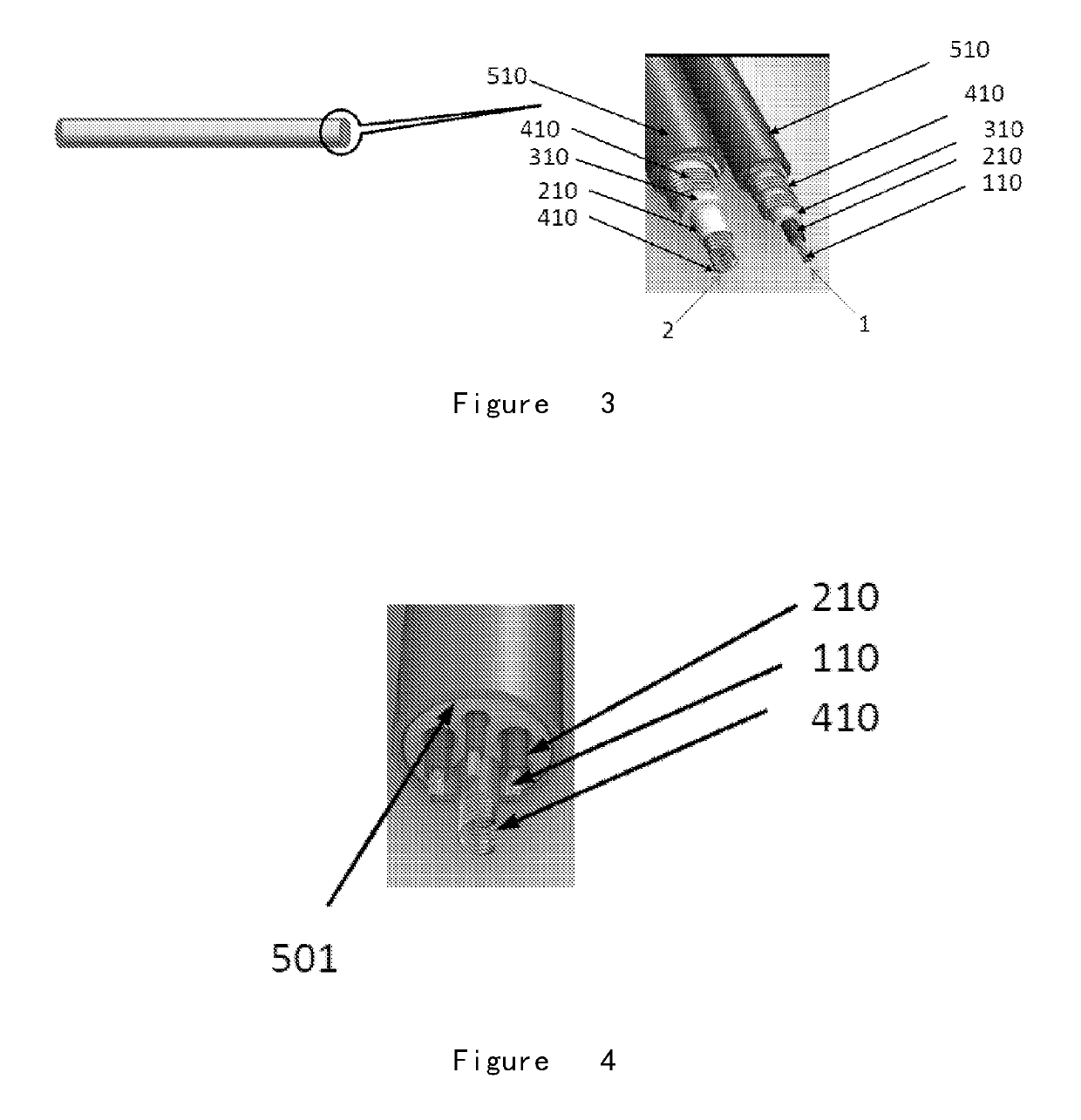Medical device, method for preparation thereof, and use thereof
a technology of macromolecular materials and medical devices, applied in the field of medical devices, can solve the problems of ether bond oxidation degradation, material failure, device failure, etc., and achieve the effects of reducing equipment costs, high efficiency, and short reaction tim
- Summary
- Abstract
- Description
- Claims
- Application Information
AI Technical Summary
Benefits of technology
Problems solved by technology
Method used
Image
Examples
example 1
Hydrogenated Diols
[0090]50 g of polybutadiene diol and 600 mL THF were added into a hydrogenating kettle; after polybutadiene diol was dissolved, 12 g of Pt hydrogenating catalyst and hydrogen gas were added into the hydrogenating kettle; the temperature was controlled to be 60° C. and pressure was controlled to be 2 MPa and the reaction continued for 20 hours until completion; and, the obtained hydrogenated diols were separated, purified, and dried.
example 2
Procedure:
[0091]30 mL toluene and 3.7 g hydrogenated polybutadiene diol (H-HTPB) were added in a 100 mL glass reactor. The mixture was stirred until the H-HTPB was dissolved in the toluene. Then 1.5 g 4,4′-diphenyl methane diisocyanate was added followed by adding 40 μL dibutyldilaurate tin catalyst. Microwave radiation (400 W) was then used to heat the reaction mixture to maintain its temperature at 65° C. while it was stirred. After 2 hours of reaction, 0.36 g of chain extender BDO (calculated according to the amount of titrated isocyanate such that the total molar of OH is equal to that of isocyanate); and then the temperature was raised to 80° C. by increasing microwave power to 500 W. Let the reaction continue for 2 more hours. When the isocyanate completely reacted based on FI-IR test, the reaction was stopped. The reaction solution was poured into menthol to precipitate the polymer product. The mixture was placed in a refrigerator for 24 hours. The solid polymer product was h...
example 3
Procedure:
[0095]30 mL toluene was added in a 100 mL glass reactor and heated to 65° C. 3.7 g hydrogenated polybutadiene diol (H-HTPB) was added in the reactor. The mixture was stirred until the H-HTPB was dissolved in the toluene. Then 1.5 g 4,4′-diphenyl methane diisocyanate was added followed by adding 40 μL dibutyldilaurate tin catalyst. The reaction mixture was heated with a regular heater to maintain its temperature at 65° C. while it was stirred. After 5 hours of reaction, 0.36 g of chain extender BDO (calculated according to the amount of titrated isocyanate such that the total molar of OH is equal to that of isocyanate); and then the temperature was raised to 80° C. by increasing heating power. Let the reaction continue for 5 more hours. When the isocyanate completely reacted based on FI-IR test, the reaction was stopped. The reaction solution was poured into menthol to precipitate the polymer product. The mixture was placed in a refrigerator for 24 hours. The solid polymer ...
PUM
| Property | Measurement | Unit |
|---|---|---|
| Length | aaaaa | aaaaa |
| Length | aaaaa | aaaaa |
| Length | aaaaa | aaaaa |
Abstract
Description
Claims
Application Information
 Login to View More
Login to View More - R&D
- Intellectual Property
- Life Sciences
- Materials
- Tech Scout
- Unparalleled Data Quality
- Higher Quality Content
- 60% Fewer Hallucinations
Browse by: Latest US Patents, China's latest patents, Technical Efficacy Thesaurus, Application Domain, Technology Topic, Popular Technical Reports.
© 2025 PatSnap. All rights reserved.Legal|Privacy policy|Modern Slavery Act Transparency Statement|Sitemap|About US| Contact US: help@patsnap.com



